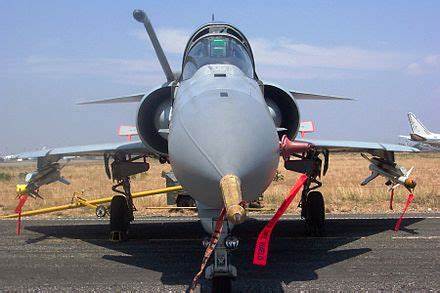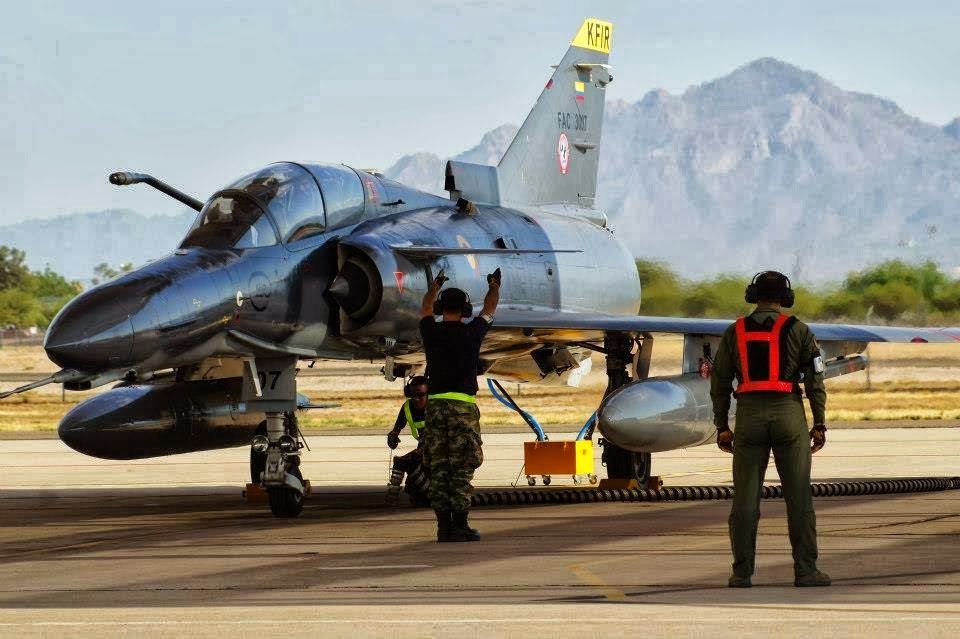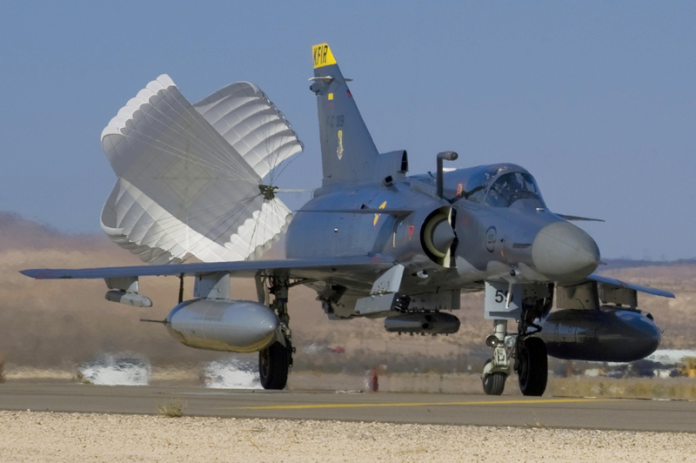
In the landscape of military aviation, few aircraft tell a story of innovation and strategy as compelling as the Israeli Air Force’s Kfir combat aircraft.

After France imposed an arms embargo on Israel, leaving the nascent Israeli Air Force (IAF) without its ordered Mirage 5J fighters.

The Kfir emerged from the shadows of the French-designed Dassault Mirage 5.

Israeli engineers, in a bold move, produced the Nesher, an unlicensed copy of the Mirage 5. But they didn’t stop there.

As neighboring adversaries fielded increasingly sophisticated Soviet-designed fighters, Israel knew it needed something more potent.

The Kfir was equipped with a General Electric J79 turbojet engine, the aircraft hit a top speed of 1,520 mph, possessed a combat range of 477 miles.

The aircraft was also a “bomb truck,” armed with Rafael-designed 30mm cannons and an array of missiles, including the AIM-9 Sidewinder and the AGM-65 Maverick.

The first Kfirs roared into service in the mid-1970s, earmarked for the 101st “First Fighter” Squadron.

However, by 1976, the Kfir’s role began to shift as the American-made F-15 Eagles took precedence in the IAF.

Nevertheless, the Kfir saw action in Lebanon in the 1980s and eventually found homes in foreign militaries.

The Israeli-designed fighter’s adaptability also caught the eye of the U.S. military.

During the Reagan administration, the U.S. Navy and Marine Corps adopted the Kfir as a dissimilar aircraft for air-combat maneuver (ACM) training.

Captain John Manning of the U.S. Navy described the Kfir as “a good MiG-23 Flogger simulator,” with “very good level flight acceleration and a high top-end speed.”

The Navy flew the Kfir until 1988, later transitioning to F-16N Fighting Falcons, while the Marines utilized them until 1989 before switching to F-5E Tiger IIs.

Despite its retirement from front-line U.S. service, the Kfir’s legacy remains influential, with private companies like ATAC still operating Kfir C.2s under government contract for ACM roles.
Relevant articles:
– Kfir: Israel’s Air Force Had 1 Fighter Plane No Country Wanted to Battle, The National Interest
– Colombia breaks diplomatic ties with Israel but its military relies on key Israeli-built equipment, WKRG
– The Israeli Air Force (IAF) in the War of Independence, World Machal
– Historic Aircraft – Stars of David and Red Stars, U.S. Naval Institute

